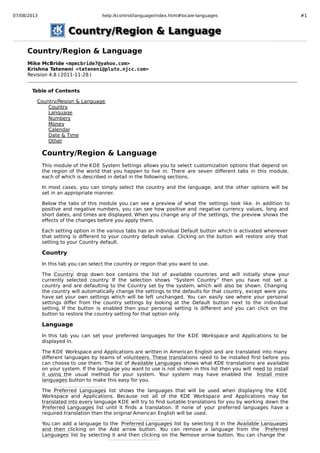This document provides information about customizing regional and language settings in KDE System Settings. It describes the different tabs for selecting options related to country, language, numbers, money, calendar, date/time formats, and other defaults. The tabs allow configuring settings like number/currency formatting, date/time display formats, language preferences, and more. Changes made are previewed before applying and individual settings can restore defaults.




